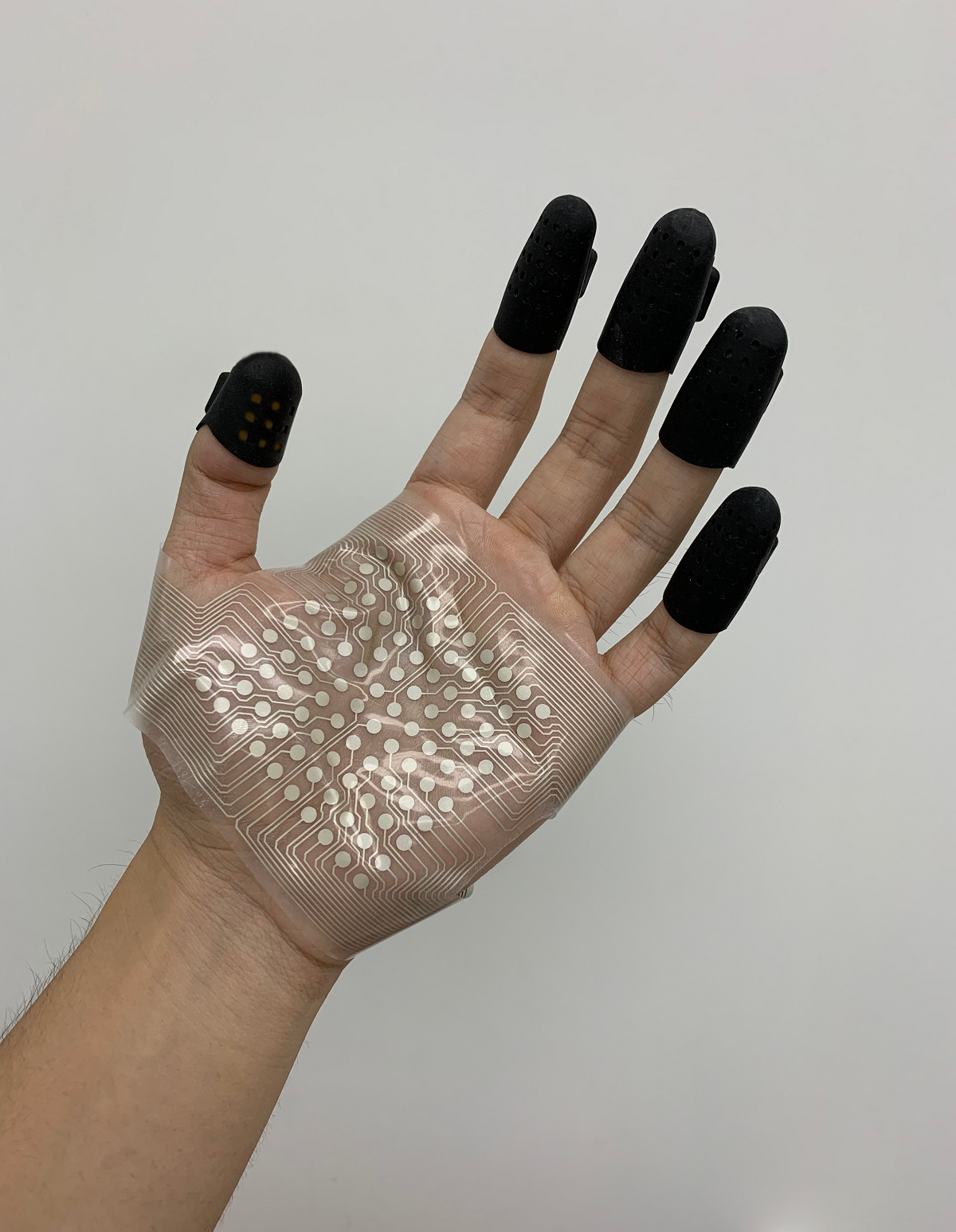
This is how the IR spectrometer works: The photodetector, fabricated on top of a surface optical waveguide, consists of a bottom gold electrode at the bottom functioning as a scattering center, a photoactive layer (consisting of colloidal mercury telluride – HgTe – quantum dots), and a top gold electrode. By moving the mirror, the measured photocurrent maps the light intensity of the standing wave. i.e. the IR light. A Fourier transformation of the measured signal gives the optical spectra.
Image: Lars Lüder
Extreme miniaturization of infrared (IR) detectors is critical for their integration into next-generation consumer electronics, wearables and ultra-small satellites. Thus far, however, IR detectors have relied on bulky (and expensive) materials and technologies. A team of scientists lead by Empa researcher Ivan Shorubalko now succeeded in developing a cost-effective miniaturization process for IR spectrometers based on a quantum dot photodetector, which can be integrated on a single chip, as they report in Nature Photonics.
Miniaturization of infrared spectrometers will lead to their wider use in consumer electronics, such as smartphones enabling food control, the detection of hazardous chemicals, air pollution monitoring and wearable electronics. They can be used for the quick and easy detection of certain chemicals without using laboratory equipment. Moreover, they can be useful for the detection of counterfeit medical drugs as well as of greenhouse gases such as methane and CO
A Team of scientists at Empa, ETH Zurich, EPFL, the University of Salamanca, Spain, the European Space Agency (ESA) and the University of Basel now built a proof-of-concept miniaturized Fourier-transform waveguide spectrometer that incorporates a subwavelength photodetector as a light sensor, consisting of colloidal mercury telluride quantum dot (Hg Te) and compatible with complementary metal-oxide-semiconductor (CMOS) technology, as they report in the recent issue of Nature Photonics.
Tremendous effects on spectrometers of different kinds – and in various fields
The resulting spectrometer exhibits a large spectral bandwidth and moderate spectral resolution of 50 cm?1 at a total active spectrometer volume below 100 ?m × 100 ?m × 100 ?m. This ultra-compact spectrometer design allows the integration of optical-analytical measurement instruments into consumer electronics and space devices. “The monolithic integration of subwavelength IR photodetectors has a tremendous effect on the scaling of Fourier-transform waveguide spectrometers”, says Empa researcher Ivan Shorubalko. “But this may also be of great interest for miniaturized Raman spectrometers, biosensors and lab-on-a-chip devices as well as the development of high-resolution snapshot hyperspectral cameras.”
Original Article: Miniaturized infrared detectors
More from: Swiss Federal Laboratories for Materials Science and Technology | University of Basel | ETH Zürich | École Polytechnique Fédérale de Lausanne | University of Salamanca | European Space Agency
The Latest Updates from Bing News
Go deeper with Bing News on:
Miniaturized infrared detectors
- SpectraCan Team From Vancouver-based Metraspectral Advances to Next Round of Xprize Wildfire 'Space-based Detection & Intelligence' Track
XPRIZE Wildfire's independent judging panel annunced that it has selected 20 Qualified Teams from around the world to advance to the next round of the XPRIZE Wildfire 'Space-Based Detection & ...
- Highly efficient and stable near-infrared phosphor for night vision and bio-imaging
Near-infrared (NIR) light source, characterized by non-destructive and rapid detection, has a wide range of applications in diverse fields including food testing, safety, sensing, agricultural ...
Go deeper with Bing News on:
IR spectrometers
- ‘Invisible’ contributor: Methane leaks from landfills are likely worse than previously thought
A new study looking at landfill emissions revealed the industrial waste dumps are likely punching above their weight when it comes to methane leaks. The report, which revealed a significant ...
- Environment
Colorado has led the nation on regulating methane emissions and now companies in the state are major contributors to a new satellite expected to be an important tool in identifying and quantifying ...
- Why bring science into Buddhist discourse?
By Geewananda Gunawardana, Ph.D. A flurry of newspaper articles on Buddhism and science appearing in recent times suggests an apparent interest in seeing the religion from a distinct perspective.
- Nanotechnology Market Unlocking Consumer Minds Insights from Observational Revelations
The term nanotechnology describes a range of technologies performed on a nanometer scale with widespread applications in various industries. Nanotechnology encompasses the production and application ...
- Nanotechnology Market Segmentation Synergy Strategies Unveiled for Optimized Market Targeting
The term nanotechnology describes a range of technologies performed on a nanometer scale with widespread applications in various industries. Nanotechnology encompasses the production and application ...










